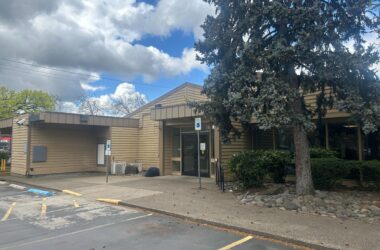
That smell. A kind of smelly smell. A smelly smell that smells…smelly.
Residents’ nostrils have been plagued by a lingering stank emanating from the City-owned Wastewater Treatment Facility for weeks. But with rain in the forecast, the smell will likely be sent packing soon.
It happens twice a year, much like the changing of seasons. The top layer of water switches with the bottom in the lagoon of the facility, located on the west side of Interstate 5, City Manager Michelle Amberg said.
”When the season changes it’s not just the leaves that fall and the temperatures that change; ponds lakes and sewage lagoons change with the seasons as well,” Public Works Director Cliff Bellew said.
The wastewater layer switches occur with the changing of seasons – spring and fall – but the smell typically doesn’t travel too far into town and hang around for very long.
Not usually. But unusual wind conditions and a prolonged heating period in recent weeks, bacteria flourished in the sunshine in the lagoons and winds spread the smells far and wide.
”With the extended warm weather this late fall and a wind current that swept across the lagoons during this time, the smell (blew) into the surrounding housing developments,” Bellew said.
Because of these conditions, Bellew said there has been more concern with the smell this year than usual.
Seasons change and the surface water cools. The lagoons reach a point where the surface water is colder than the water below it. The lagoons turn over and the water at the bottom is brought to the top surface, Bellew said.
With it comes some not-so-nice smells, as decaying matter, sulfur and methane gases that have been trapped at the bottom are now exposed on the surface, he said. And then wind currents drift those smells around the community.
But it’s not all bad, Bellew said. Moving past the smells, this turnover is actually good for the lagoon. The turnover redistributes the oxygen and nutrients within the lagoons, creating the natural treatment of the sewage lagoons, he said.
”Thermal stratification – a term known as turnover – is actually good for the lagoons, although you might not enjoy the smell that it causes,” Bellew said.
Creswell Public Works checked the sludge levels of the lagoons and submitted the results to DEQ (Department of Environmental Quality), he said.
”The levels remain fairly constant year over year and are within acceptable levels,” Bellew said. ”We have been in contact with Lane Regional Air Protection Agency (LRAPA) and DEQ and are operating our Wastewater Treatment Facility with in the requirements of our regulating authorities.”
The conclusion is that lagoons are a biological type of treating sewage and that thermal stratification is a natural occurrence that happens twice a year typically, Bellew said.
Now we just wait for rain.
As soon as a heavy rain comes, Amberg said, the smells will begin to dissipate.
According to the most recent Wastewater System Facilities Plan for Creswell dated September 2017 , the City currently serves approximately 2,312 user accounts with their facility, while the Emerald Valley System serves approximately 337 user accounts and serves users on the east side of Interstate 5.
The City’s treatment plant consists of an influent pump station, three facultative lagoons, a chlorine contact chamber and an effluent pump station. The City’s existing wastewater facilities consist of a conventional gravity collection system that conveys wastewater to the treatment plant. The City’s gravity collection piping includes approximately 90,000 feet of mainline piping, 345 manholes and 1,800 service laterals, according to the 2017 study.







